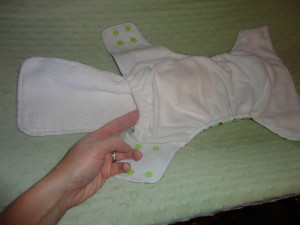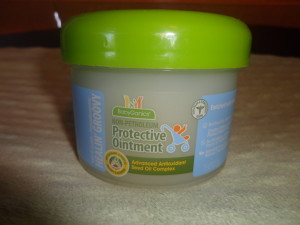Tips for Cloth Diapering
By Guest Blogger Sandy Harper
The once only way to diaper your baby has now made a popular come back with many new parents. The difference from then and now is the many choices of cloth diaper types and how to take care of them.
It’s easy to become overwhelmed when researching cloth diaper options. My husband and I were fortunate to find a semi-local shop that specialized in cloth diapers and had a well knowledgeable staff. We were shown the different styles of diapers that are available and the variety of products to take care of them. They also told us how many cloth diapers we would need to stay ahead of laundry and need. This store is no longer open but there is an amazing locally run website, Thinking about Cloth Diapering, that has an abundance of information that I strongly suggest anyone interested in cloth diapering should check out.
With a simple Google search you can find many other sites that sell cloth diapers and offer information but it helps to have an initial idea of what exactly to look for. Here are the five different cloth diaper styles you will find: prefold “the original”, pocket, fitted, all in one and all in two “hybrid”.
Prefold diapers are the ones you probably mentally picture when you think of cloth diapers. They are rectangular and require you to fold to fit, then pin in place and use a cover over to keep from leaking. This style is inexpensive and easy to clean but not as convenient to use as the modern styles.
The pocket diaper was the first improvement to the cloth diaper in centuries. It consists of a cover with a lining sewn so that it creates a pocket, where an absorbent pad can be slid into. The down side to this kind has to be pulling out the soiled pad out of the pocket but it is still an inexpensive choice.
Fitted diapers are hour-glass shaped and made of multiple layers of absorbent material. They often use snaps as fasteners and have elastic around the legs. The disadvantage with them is they are not waterproof; you will still need to use a cover (much like with prefold style) over them.
All in One diapers are great for easy and quick changes. They have extra layers for absorbency, all in one piece. The main disadvantage with these is drying time and only being able to wear once then wash.
The All in Two diaper is part cover and part insert. The insert lies on top of the cover’s inside. This offers the ability to use cloth or disposables inserts (which is great when on the go). The great advantage to these is the option to reuse the cover until it gets soiled.
After doing our own research we decided that the All in Two style was best for us. The covers could be used more than once between washes, plus we liked the idea of having disposable liners when we were on the go. The Flips brand has great prices and offers all you need to cloth your child from newborn to potty training. Their diapers are one size that fits throughout your child’s diapering stage. Their size can be changed by means of snaps. The Flip’s website gives more information on their diapers, plus you can buy straight from there. They also have a tab showing where you can buy Flip diapers in your state.
When cleaning your cloth diapers you need a few essential items: a sprayer (that attaches to a toilet), a diaper pail or wet bag, cloth diaper friendly stain remover and detergent, a washing machine and somewhere to hang the diapers to dry. A sprayer will help knock off waste easily into the toilet, plus they are affordable and easy to attach. Wet bags and diaper pails come in handy when storing dirty diapers between laundry loads. This link gives examples of wet bags and diaper pails. Cloth diapers require special and more natural cleaning products. Babyganics and Dapple brands sells both detergent and stain remover that is cloth diaper safe. There are many types of safe cleaning products but I like how affordable and easy to find are Babyganics and Dapple (found at Babies “R” Us, Target, Bed, Bath & Beyond and many other retailers).
Cloth diapers need to hang dry, so having a place to hang them is a must. Outside drying lines are great but you will need an option for rainy or freezing days. We hung a few lines in our laundry room because this was easier to access plus we don’t have to worry about what the weather is.
 There is no denying that cloth diapering is extra work but for us and I’m sure many of you readers, it’s worth it. First there is the obvious benefit to the environment. It takes an estimated 250-500 years for disposable diapers to decompose. This link offers more interesting diaper and environment facts to take into consideration. Cloth diapers offer natural materials against your baby’s skin, additionally there tends to be fewer issues with diaper rash and other skin irritations. When you do come across a diaper rash episode, it is important to use the proper butt creams for cloth diapers. Zinc oxide based creams should not be used on them. Finally, there are the financial benefits. Using disposable diapers for three years with roughly cost a family a little over $2000 (for one child). In that same time frame, families that cloth diaper (and do their own washing) will spend around $800-$1000. This price cuts in half with any additional children because you will only be paying for cleaning. Note if you choose to use a diaper cleaning service then the cost savings will be slight.
There is no denying that cloth diapering is extra work but for us and I’m sure many of you readers, it’s worth it. First there is the obvious benefit to the environment. It takes an estimated 250-500 years for disposable diapers to decompose. This link offers more interesting diaper and environment facts to take into consideration. Cloth diapers offer natural materials against your baby’s skin, additionally there tends to be fewer issues with diaper rash and other skin irritations. When you do come across a diaper rash episode, it is important to use the proper butt creams for cloth diapers. Zinc oxide based creams should not be used on them. Finally, there are the financial benefits. Using disposable diapers for three years with roughly cost a family a little over $2000 (for one child). In that same time frame, families that cloth diaper (and do their own washing) will spend around $800-$1000. This price cuts in half with any additional children because you will only be paying for cleaning. Note if you choose to use a diaper cleaning service then the cost savings will be slight.
While cloth diapers aren’t for everyone, their popularity is on the rise. When becoming a new parent, it is a great idea to at least look into and take into consideration of using cloth diapers. We have been using cloth diapers with our two year old son since he was a newborn. To be fair, I will admit we do occasionally use disposable, like when we are on vacation, long day trips or errand days and when he’s with a babysitter. Yet, two years later we are still happy with our choice to mostly use cloth diapers and have every attention to use them with our daughter when she makes her arrival next February.







Great advice. Our favorite has also been the All in Two. I was hesitant to use cloth diapers in the beginning but it soon becomes old hat and you don’t even think about an alternative after you get used to it!
Been contemplating doing this with baby number two! Thanks for the tips.